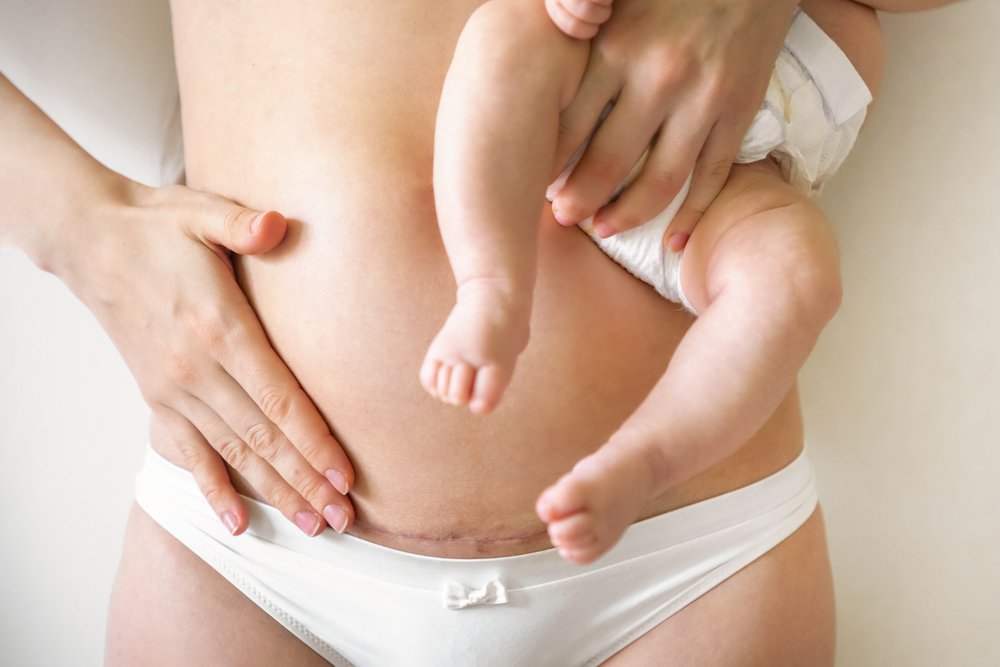
We see many moms who had c-sections. Some come to see us 6 weeks after birth, some 6 years (or more!). Often, these moms are having problems like back pain, Diastasis Recti, incontinence, or even pain with sex/problems orgasming. One of the first questions we ask is: “Did you work on your scar?” Many of these moms were never told to work on their scar and are still scared to touch it. Working on the c-section scar is hugely important for healing the mind, body, and spirit. Read on to learn why this is important:
If you’re scared to touch it or feel like mentally there’s a block, you’re not alone.. Many of our moms tell us they saw on tik tok or Instagram to touch their c-section scar but feel like they “found out too late,” aren’t sure what to do or when to start or have too much pain or numbness in or around their scar. (Side note- it’s never too late to start. You can’t rewind the clock but you can still get benefits from touching and working on your scar.)
Let’s start with why to touch your c-section scar
- Our bodies store emotions. If you had a traumatic c-section or even just a birth that ended in an unplanned c-section, your brain makes a connection with that area and can store memories, feelings, thoughts, and emotions there. Touching the scar can start to “unlock” these so you can start to work through and release them
- When you have any kind of surgery, the brain 🧠 often over activates muscles in that area to protect it. Touch helps to tell the nervous system that it doesn’t have to protect and tighten the muscles so much. This calming effect can help the deep core to work better which can help with pain and pelvic floor problems
- Scar tissue forms in the area and can “stuck” which can put pressure on organs, muscles, and other structures which can contribute to back pain, pelvic pain, leaking urine, and prolapse.
Working on your scar can start as early as day 1 after your c-section. The earlier you make a mental and physical connection, the easier mental and physical recovery will be.
Day 1- start taking care of your incision following your surgeon’s guidelines. Be mindful with your movement, connecting to the area by paying attention to sensations, pain, and looking at the area. If you feel like you can’t do this, have someone else help you but take time outside of your incision care to touch the area over clothing + your bandage 🤕. The touch receptors in your fingers can help start to connect your brain to the area to improve healing and trauma response. I actually encourage clients to start touching the skin around the bandage to improve circulation and healing. Just make sure you wash your hands first.
Continue this until your wound is closed/you get the go ahead to touch the scar.
- 2. When you’re allowed to start touching the area and the wound is closed, you can start doing myofascial work. Start by simply touching the area and moving your fingers side to side and up and down. If that feels okay you can then do circles. You can keep this up until 3 months postpartum. As you do this, pay close attention to sensations, pain, and any thoughts/memories/feelings that come up.
- 3. At 3 months, as long as healing is still going well, you can start cupping. This is a more aggressive treatment so it might be smart to see a provider to help you with this. This can help move scar tissue to prevent problems like back pain, pelvic pain, and constipation.
If you're 6 months or 6 years postpartum, start with step 2. Gradually progress to each part in step 2 and then move on to step 3. If you want to make sure you're doing it right, let us help you!
If you’re ready to start to heal your mind, body, and spirit, and ditch Diastasis Recti, pain with sex, back pain, hip pain, incontinence, or just want to feel better about your body (goodbye c-section shelf!), book a free consult with us in our Wexford, PA office, Greensburg PA office, or virtually from anywhere in the world!
